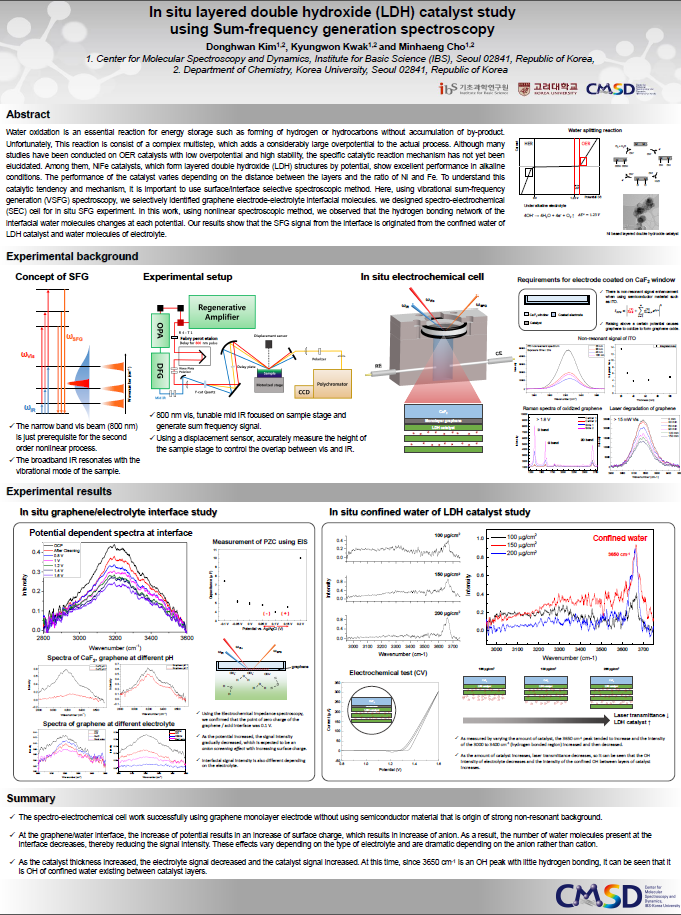mainmenu
In situ layered double hydroxide (LDH) catalyst study using Sum-frequency generation spectroscopy
2019 124th KCS General Meeting

Abstract: Water oxidation is an essential reaction for energy storage such as forming of hydrogen or hydrocarbons without accumulation of by-product. Unfortunately, This reaction is consist of a complex multistep, which adds a considerably large overpotential to the actual process. Although many studies have been conducted on OER catalysts with low overpotential and high stability, the specific catalytic reaction mechanism has not yet been elucidated. Among them, NiFe catalysts, which form layered double hydroxide (LDH) structures by potential, show excellent performance in alkaline conditions. The performance of the catalyst varies depending on the distance between the layers and the ratio of Ni and Fe. To understand this catalytic tendency and mechanism, it is important to use surface/interface selective spectroscopic method. Here, using vibrational sum-frequency generation (VSFG) spectroscopy, we selectively identified graphene electrode-electrolyte interfacial molecules. And we designed spectro-electrochemical (SEC) cell for in situ SFG experiment. In this work, using nonlinear spectroscopic method, we can observe that the hydrogen bonding network of the interfacial water molecules changes at each potential.


